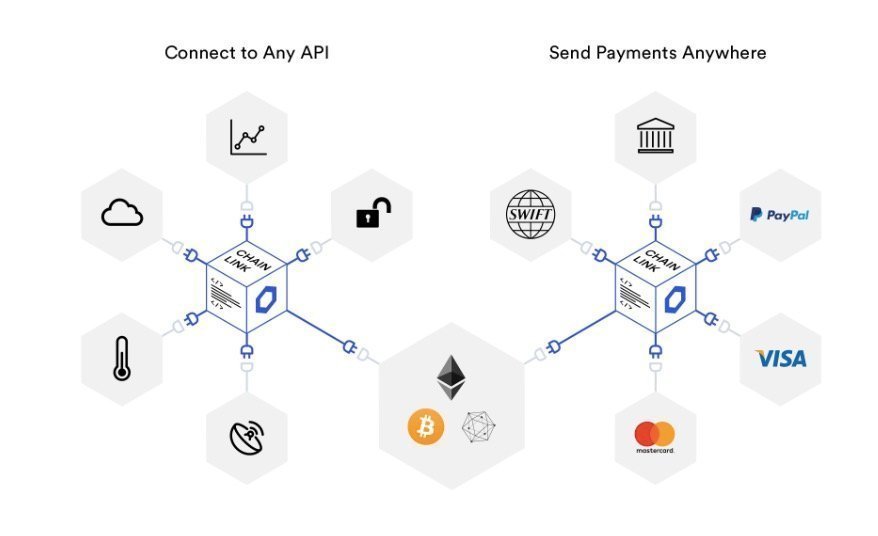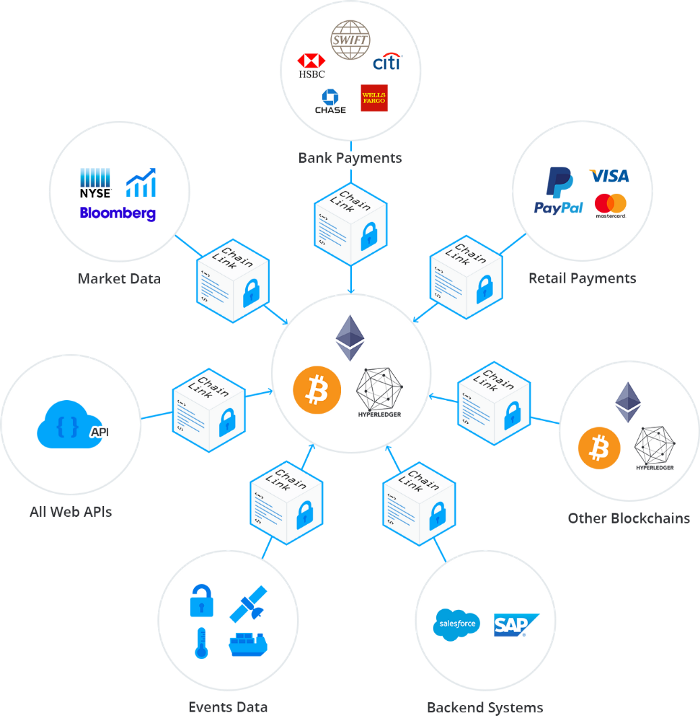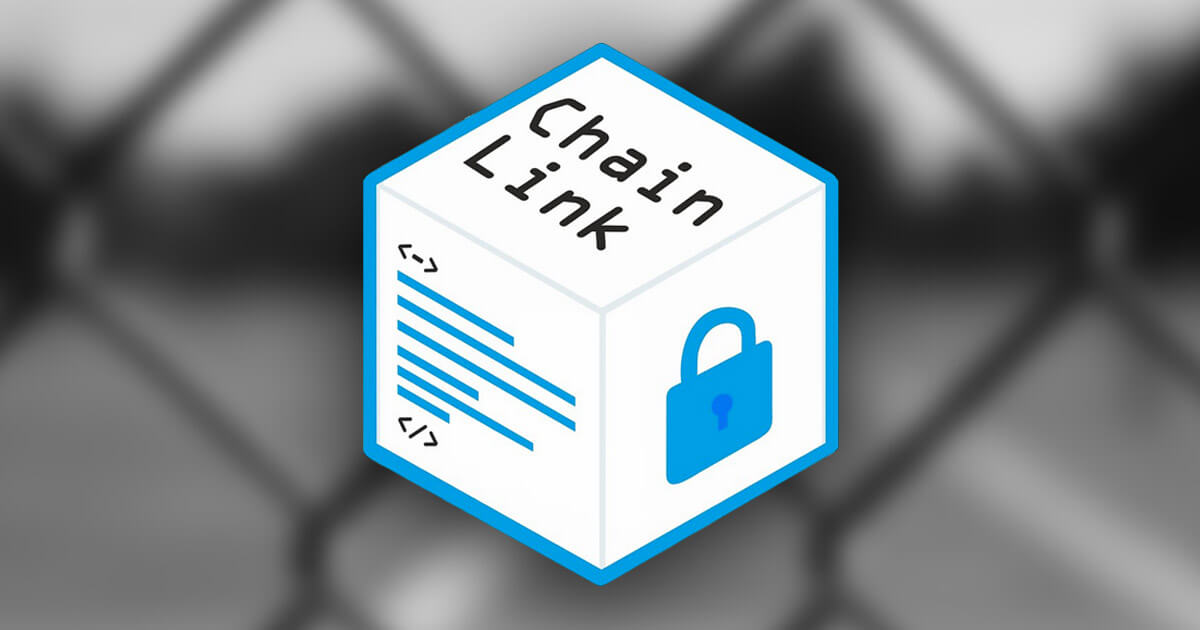What is Chainlink (LINK) for you beginners in this guide? What does Chainlink do, where and how to buy Chainlink? We have provided answers to questions such as: In this guide, you can find answers to many questions about the promising Chainlink (LINK). You can find the answer to the frequently asked question, What is a Chainlink coin, with all the details in this guide.
What is Chainlink
Chainlink between payment services like PayPal and Visa, banks like HSBC and Wells Fargo, and blockchains like Ethereum and Bitcoin It is a Blockchain project that aims to build bridges. It was launched in 2015 and was made available to the public with the ERC-20 token LINK during the ICO token sale in 2017.

Chainlink is a decentralized Blockchain Oracle (expert) platform that can connect to real world applications, data and an API. Chainlink was originally called SmartContract and aims to bridge the gap between Blockchain and legacy systems. Chain processing has smart contracts with parameters specified in a Service Level Agreement (SLA). Oracle collects data to prevent tampering, validates it, saves it to the Blockchain and rewards it with LINK, Chainlink’s native Ethereum token. Most importantly, it enables this data to be used in smart contracts.
Chainlink currently resides on the Ethereum Blockchain and provides connectivity support to other Ethereum dApps. It will soon support more blockchains as interoperability is the focus of the entire project. Like
Chainlink and Augur, Oracle combines real-world data with Blockchain technology to unlock new possibilities. Some believe this is the natural evolution of cryptocurrencies and smart contracts.
What is LINK?
Chainlink’s token is called LINK, and the total supply of the cryptocurrency is capped at 1,000,000,000 LINK. At the time we prepared the guide, the amount of LINK in circulation was 350,000,000.
Currently, the LINK price is 8.73 US Dollars. The LINK price hit its highest level ever at $20.12 on August 16, 2020.
How Does Chainlink Work?
Thanks to these contracts of Ethereum (ETH), which added new value to the crypto money ecosystem and offered smart contracts to users in 2015, Blockchain is no longer just a place where financial transactions and data are recorded. Thanks to smart contracts, the usage area of Blockchain technology has expanded.
In contrast, a smart contract was only capable of managing the data on the Blockchain it was in. In other words, Blockchain technology, which has the potential to serve the whole world, could not be used by many sectors in the world. That’s where Chainlink came into existence to solve the problem.

Chainlink enables off-chain applications to include data in repository and similar sources in the process, that is, move them to Blockchain. In short, it is possible to define Chainlink as a representative working between the real world and Blockchain. With this identification, Chainlik takes the world’s data and integrates it into the Blockchain and enables this data to be used in smart contracts.
Chainlink Features
Chainlink’s main focus is on working with smart contracts. Chainlink provides access to any external API you want to connect to the smart contract. Thus, it is possible to make payments to any payment system or banking network through a contract.
ChainLink smart contracts serve three functions:
- Reputation evaluation: Users can use smart contracts with a certain parameter range, which includes an oracle reputation called service level agreement. Oracles who violate the rules of the network and provide false data will be penalized and also demoted. If the smart contract receives a sufficient number of applications, a service contract with ChainLink begins.
- Working with external data: When off-line oracles are selected, they make a programmatic agreement and provide the requested data.
- Aggregation: As a third step, the aggregation contract collects all data transmitted by off-chain oracles and then averages them to create a weighted aggregate response.
In simple terms, Chainlink can be defined as a decentralized oracle network that provides data.
ChainLink Oracle
Oracle are servers that will provide data. They are the data providers of what is going on in the real world. Thanks to them, the data goes to the blockchain and the smart contract understands what is happening, draws conclusions and makes transactions. For the process to be effective, you need to know that oracles work honestly and that vendors don’t cheat or provide accurate information.
ChainLink oracles can use datasets, APIs, and other, almost any outside world resources. This will be useful for projects that need external data to work. ChainLink aims to be a bridge between traditional knowledge and the technology of the future, blockchain.
Chainlink Advantages
- Chainlink project provides compatibility between Bitcoin, Ethereum, and also enables banks and payment services to be included in the system.
- One of Chainlink’s goals is to decentralize smart contracts. This is a step that will greatly improve the security and accuracy of information.
- SmartContract, which is the backbone of Chainlink developers, has been engaged in contract automation since 2014.
- Cooperation with the largest companies – Google Cloud, Oracle and SWIFT – gives confidence
- LINK tokens are seen by users as an important investment tool, given the technological capabilities and goals of the Chainlink project.
Drawbacks of Chainlink
There is little guarantee for investors that the partnership will be long and fruitful. Low development speed is cited as one of the big problems. It is not known how long it will take for Chainlink to implement a real working solution that affects the execution of financial transactions. Moreover, there is no officially published roadmap to guide.
DeFi and Chainlink
Blockchains are basically designed as a closed system. They only rely on on-chain data that already exists on the blockchain. This ensures that decentralized consensus is maintained and cannot be manipulated. However, the use cases of blockchain are extremely limited with this premise.
For example, price and interest datasets created outside of a blockchain (off-chain) and differing in value and format from different sources are inaccessible. Additionally, the diversity of data makes it difficult for blockchains to obtain reliable data without compromising consensus reliability. In this regard, the Chainlink team states:
“Given the realities of modern data and blockchain consensus, there is an urgent need for a standard bridge between DeFi applications and off-chain data of all kinds. As discussed below, Chainlink is a standard, yet customizable protocol for enabling DeFi to connect securely and reliably with off-chain resources.”
Using Chainlink, DeFi projects can increase the variety of products offered and make the market more attractive to players. Altogether, Chainlink lists four tangible benefits that Chainlink Oracle technology offers: connectivity, data protection as well as confidential and cost-effective data.
How to Buy Chainlink?
You can use Turkey’s largest cryptocurrency exchange Paribu to invest in Chainlik, a promising Blockchain project in every aspect, and to buy cryptocurrency LINK.
You can buy Chainlik with Turkish Lira on Paribu. You can reach the Exchange by continuing here .
With this guide, we have shared with you the answer to the question What is Chainlink in detail.







